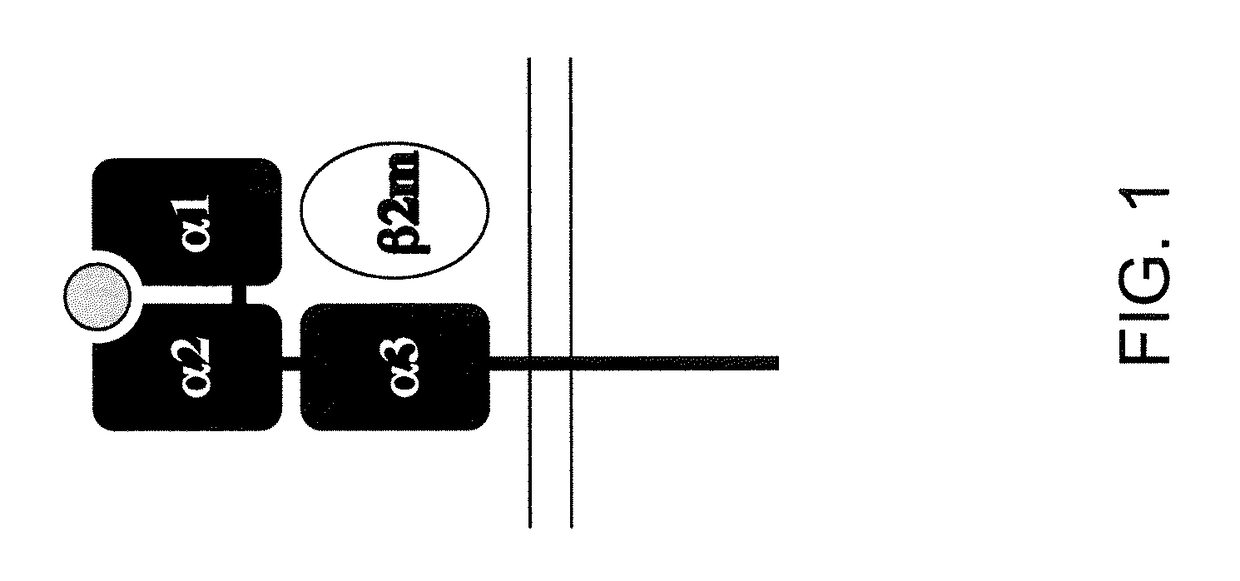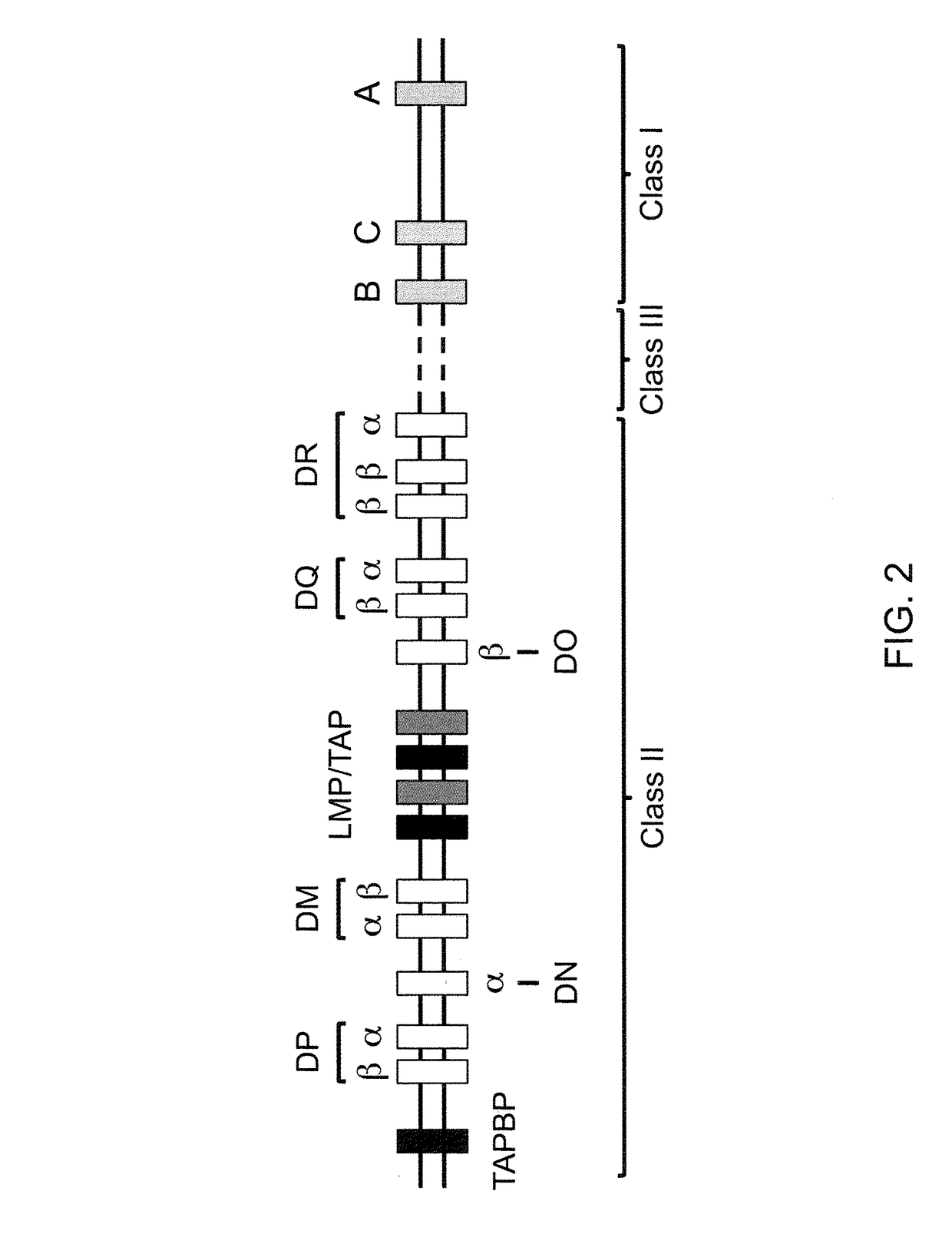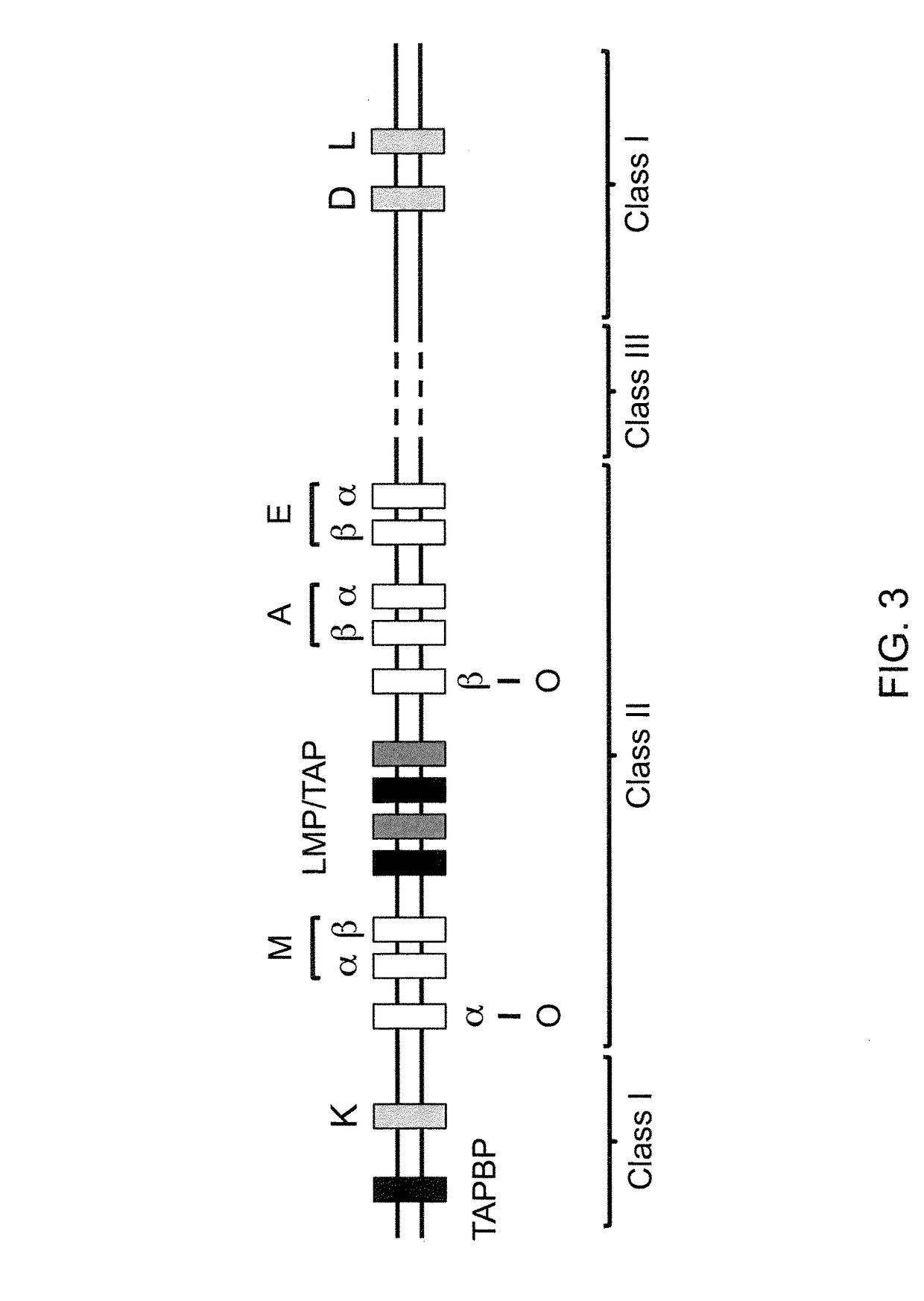Genetically modified major histocompatibility complex animals
a histocompatibility complex and genetic modification technology, applied in the field of genetically modified nonhuman animals, can solve problems such as the destruction of cells presenting such peptides
- Summary
- Abstract
- Description
- Claims
- Application Information
AI Technical Summary
Benefits of technology
Problems solved by technology
Method used
Image
Examples
example 1
Construction and Characterization of Genetically Modified HLA-A2 Mice
example 1.1
Expression of HLA-A2 / H-2K in MG87
[0197]A viral construct containing a chimeric HLA-A2 / H-2K gene sequence (FIG. 4A) was made using standard molecular cloning techniques known to a skilled artisan in order to analyze chimeric human / mouse MHC I expression in transfected cells.
[0198]Briefly, a chimeric human HLA-A / mouse H-2K viral construct was made using the exon sequences encoding the α1, α2 and α3 domains of the α chain and cloning them in frame with the mouse coding sequences for the transmembrane and cytoplasmic domains from the H-2K gene (FIG. 4A, pMIG-HLA-A2 / H2K). As illustrated in FIG. 4, the construct contained an IRES-GFP reporter sequence, which allowed for determining if the construct was able to express in cells upon transfection.
[0199]Viruses containing the chimeric construct described above were made and propagated in human embryonic kidney 293 (293T) cells. 293T cells were plated on 10 cm dishes and allowed to grow to 95% confluency. A DNA transfection mixture was prepar...
example 1.2
Engineering a Chimeric HLA-A2 / H-2K Locus
[0202]The mouse H-2K gene was humanized in a single step by construction of a unique targeting vector from human and mouse bacterial artificial chromosome (BAC) DNA using VELOCIGENE® technology (see, e.g., U.S. Pat. No. 6,586,251 and Valenzuela et al. (2003) High-throughput engineering of the mouse genome coupled with high-resolution expression analysis. Nat. Biotech. 21(6): 652-659). DNA from mouse BAC clone RP23-173k21 (Invitrogen) was modified by homologous recombination to replace the genomic DNA encoding the α1, α2 and α3 domains of the mouse H-2K gene with human genomic DNA encoding the α1, α2 and α3 subunits of the human HLA-A gene (FIG. 5).
[0203]Briefly, the genomic sequence encoding the mouse the α1, α2 and α3 subunits of the H-2K gene is replaced with the human genomic DNA encoding the α1, α2 and α3 domains of the human HLA-A*0201 gene in a single targeting event using a targeting vector comprising a hygromycin cassette flanked by lo...
PUM
| Property | Measurement | Unit |
|---|---|---|
| temperature | aaaaa | aaaaa |
| polymorphic | aaaaa | aaaaa |
| non-covalent | aaaaa | aaaaa |
Abstract
Description
Claims
Application Information
 Login to View More
Login to View More - R&D
- Intellectual Property
- Life Sciences
- Materials
- Tech Scout
- Unparalleled Data Quality
- Higher Quality Content
- 60% Fewer Hallucinations
Browse by: Latest US Patents, China's latest patents, Technical Efficacy Thesaurus, Application Domain, Technology Topic, Popular Technical Reports.
© 2025 PatSnap. All rights reserved.Legal|Privacy policy|Modern Slavery Act Transparency Statement|Sitemap|About US| Contact US: help@patsnap.com



